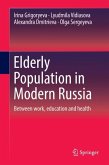This book presents an innovative demographic toolkit known as the ProFamy extended cohort-component method for the projection of household structures and living arrangements with empirical applications to the United States, the largest developed country, and China, the largest developing country. The ProFamy method uses demographic rates as inputs to project detailed distributions of household types and sizes, living arrangements of all household members, and population by age, sex, race/ethnicity, and urban/rural residence at national, sub-national, or small area levels. It can also project elderly care needs and costs, pension deficits, and household consumption. The ProFamy method presented herein has substantial merits compared to the traditional headship rate method, which is not linked to demographic rates and projects limited household types without other household members than "heads".
The book consists of four parts. The first part presents the methodology, data, estimation issues, and empirical assessments. The next parts present applications in the United States (part two) and China (part three), concerning demographic, social, economic, and business research; policy analysis, including forecasting future trends of household type/size, elderly living arrangements, disability, and home-based care costs, and household consumption including housing and vehicles. The fourth part includes a user's guide for the ProFamy software to project households, living arrangements, and home-based consumptions.
This book offers an invaluable toolkit for researchers, analysts and students in academic, public and private businesses, whose work is related to levels and rates of change in households, population and consumption patterns.
The book consists of four parts. The first part presents the methodology, data, estimation issues, and empirical assessments. The next parts present applications in the United States (part two) and China (part three), concerning demographic, social, economic, and business research; policy analysis, including forecasting future trends of household type/size, elderly living arrangements, disability, and home-based care costs, and household consumption including housing and vehicles. The fourth part includes a user's guide for the ProFamy software to project households, living arrangements, and home-based consumptions.
This book offers an invaluable toolkit for researchers, analysts and students in academic, public and private businesses, whose work is related to levels and rates of change in households, population and consumption patterns.








